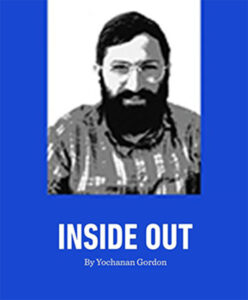A Visit Home
By Yochanan Gordon
It’s been five weeks since we stood in the parking lot at Marshalls on Rockaway Turnpike, waving to our kids as the buses pulled away, heading toward summer camp. In those five weeks, we’ve already had two visiting days, and the Camp Munk circus—scheduled for the Sunday after Tishah B’Av—remains a longstanding tradition.
I’ll admit, I’ve found myself slipping into moments of cynicism (which I recognize as a shortcoming), wondering why we even send our kids to camp if we’re going to make multi-hour trips every couple of weeks to measure their progress. But as the saying goes: a watched garden is slow to grow. As parents, excited for our kids to spend these months growing socially, spiritually, emotionally, and physically, it feels almost counterintuitive to be summoned back so soon, as if we’re going to notice a drastic change just two weeks after our last visit.
Still, everything that occurs in our lives is preordained and holds a lesson waiting to be discovered. That’s why I found myself contemplating the significance of visiting day falling so close to Shabbos Chazon, which this year landed on erev Tishah B’Av.
This should not be taken for granted. In previous years, the traditional two visiting days were reduced to one—for all the reasons mentioned above. This year, the two-visit model was reinstated, and its timing—juxtaposed with Shabbos Chazon and Tishah B’Av—feels significant.
One concern I had with visiting day being during the Nine Days is that it requires hundreds of people to take long drives during a time when we try to avoid unnecessary travel and risky activities. Thankfully, I didn’t hear of any major accidents this past Sunday, but sadly, the number of summer traffic incidents between the mountains and the city are too numerous to count. So when I realized that the second visiting day fell within the Nine Days proper, I’ll admit—it put me on edge.
There’s a famous analogy offered by Rebbe Levi Yitzchak of Berditchev to explain the deeper meaning of Shabbos Chazon. The name comes from the opening words of the Haftorah, Chazon Yeshayahu ben Amotz. In many communities, Shabbos Chazon carries a heavy and somber mood. But through the Chassidic lens, where joy and hope are core values, the Berditchever Rebbe taught that on this Shabbos, Hashem shows every Jew a vision of the third Beis HaMikdash.
He likened it to a father who lovingly sewed a garment for his child, which was subsequently ruined. He made a second one—also torn. Eventually, the father made a third, but instead of giving it right away, he set it aside and, from time to time, allowed his child to gaze upon it, saying: “When you’ve learned to take care of it, this will be yours.” This reframes Shabbos Chazon from a day of sadness to one of hope, potential, and inner transformation.
Still, the more I thought about it, the more I noticed something counterintuitive in the Berditchever’s analogy. We don’t normally visit home. We leave home to visit someone else. The visit is temporary; home is permanent. Yet here, it seems, we’re being allowed a fleeting visit home.
That struck a chord.
As we drove through the city on Sunday morning, en route to camp, the fortress-like skyline of New York City—once a symbol of strength and pride—felt different. It didn’t feel as secure. It didn’t warm my heart the way it once did. And while we naturally convince ourselves that things here will eventually improve, that life in New York or even on Long Island will work itself out—those affirmations ring a bit hollow these days. The idea of living in Eretz Yisrael, once so distant and abstract, is starting to come into clearer focus.
There was something poetic about heading upstate—a temporary visit to see our kids—during the week of Shabbos Chazon, a day when Hashem gives us a temporary glimpse of home.
Chazon means vision. Visionaries are those who see things long before they become real. The Lubavitcher Rebbe assumed leadership in January 1950, and the height of the Messianic fervor emerged in the early 1990s—forty years later. That was when the Rebbe famously declared: “Let’s greet Moshiach with acts of goodness and kindness.” He echoed the words of his predecessor, saying, “All that’s left is to polish the buttons on Moshiach’s coat.”
Then came Gimmel Tammuz, and for the past thirty-one years we’ve wrestled with the question: What happened to the immediacy of that message?
But now, as we stand in the week of Shabbos Chazon—a week in which every Jew is granted vision—we’re reminded that what was once merely a dream is coming closer. The gap between vision and reality is narrowing.
Chazal teach that a student cannot fully grasp the teachings of their Rebbe until forty years later. The Rebbe was always forty years ahead of his time—and now, as we enter the fourth decade since his physical passing, so many of the things he said are beginning to feel startlingly real.
Let us greet Moshiach today.
Yochanan Gordon can be reached at [email protected]. Read more of Yochanan’s articles at 5TJT.com.










